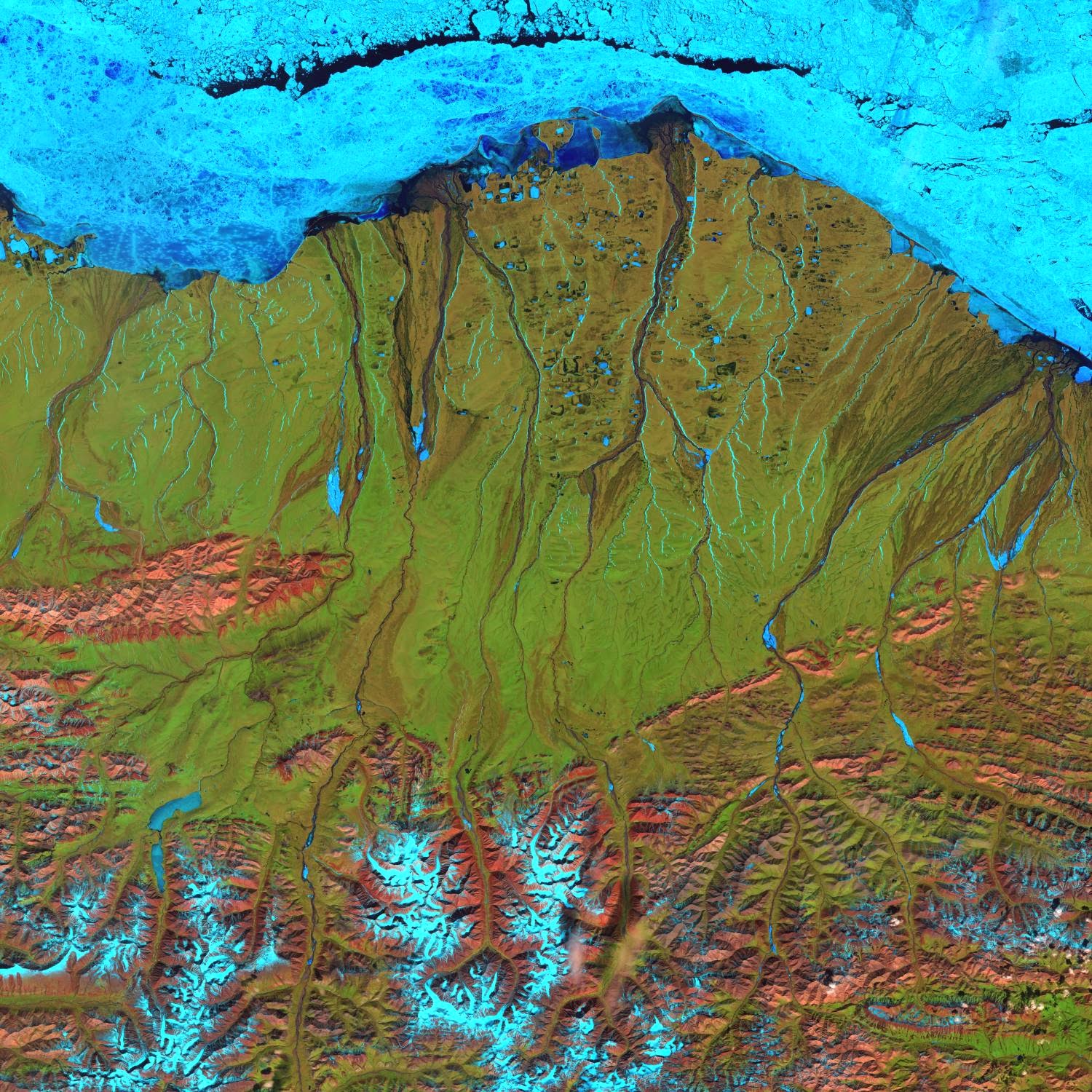
Genetic testing of Iñupiat people currently living in Alaska’s North Slope is helping Northwestern University scientists fill in the blanks on questions about the migration patterns and ancestral pool of the people who populated the North American Arctic over the last 5,000 years.
“This is the first evidence that genetically ties all of the Iñupiat and Inuit populations from Alaska, Canada and Greenland back to the Alaskan North Slope,” said Northwestern’s M. Geoffrey Hayes, senior author of the new study to be published April 29, 2015, in the American Journal of Physical Anthropology.
In this study, all mitochondrial DNA haplogroups previously found in the ancient remains of Neo- and Paleo-Eskimos and living Inuit peoples from across the North American Arctic were found within the people living in North Slope villages.
These findings support the archaeological model that the “peopling of the eastern Arctic” began in the North Slope, in an eastward migration from Alaska to Greenland. It also provides new evidence to support the hypothesis that there were two major migrations to the east from the North Slope at two different times in history.
“There has never been a clear biological link found in the DNA of the Paleo-Eskimos, the first people to spread from Alaska into the eastern North American arctic, and the DNA of Neo-Eskimos, a more technologically sophisticated group that later spread very quickly from Alaska and the Bering Strait region to Greenland and seemed to replace the Paleo-Eskimo,” Hayes said.
“Our study suggests that the Alaskan North Slope serves as the homeland for both of those groups, during two different migrations. We found DNA haplogroups of both ancient Paleo-Eskimos and Neo-Eskimos in Iñupiat people living in the North Slope today.”
Hayes is an assistant professor of endocrinology at Northwestern University Feinberg School of Medicine and an assistant professor of anthropology at Northwestern’s Weinberg College of Arts and Sciences. He has been studying population genetics of the Arctic for more than a decade.
At the request of Iñupiat elders from Barrow, Alaska, who are interested in using scientific methods to learn more about the history of their people, Hayes and a team of scientists extracted DNA from saliva samples given by 151 volunteers living in eight different North Slope communities. This is the first genetic study of modern-day Iñupiat people.
For this paper, the scientists sequenced and analyzed only mitochondrial DNA. Mitochondrial DNA is passed down from mother to child, with few changes from generation to generation.
Ninety-eight percent of the maternal linages in this group were of Arctic descent. The scientists found all known Arctic-specific haplogroups present in these North Slope communities. The haplogroups are: A2a, A2b, D4b1a and D2.
D2 is the known haplogroup of ancient Paleo-Eskimos. Until this study D2 had only been found in the remains of ancient Paleo-Eskimos.
D4b1a is a known haplogroup of the ancient Neo-Eskimos, the much more technologically sophisticated group that came after the Paleo-Eskimos and seemed to replace them and populate a large part of the Arctic in a short amount of time.
“We think the presence of these two haplotypes in villages of the North Slope means that the Paleo-Eskimos and the Neo-Eskimos were both ancestors of the contemporary Iñupiat people,” said Jennifer A. Raff, first author of the study and a post-doctoral fellow in Hayes’ lab at the Feinberg School when the research was being done. “We will be exploring these connections in the future with additional genetic markers.”
Another haplogroup that surfaced in this study was C4. This is typically only seen in Native Americans much farther south. Its geographic distribution suggests that it might have been one of the haplogroups carried by the earliest peoples to enter the Americas. The researchers think it could be seen in the North Slope because of recent marriages between Athapascan and Iñupiat families or because it is a remnant of a much more ancient contact between these groups.
One more surprise in this study was evidence there may have been some migrations of Greenlandic Inuit back to the Alaska North Slope. The scientists plan to explore this in the future with additional genetic markers, too.
This work is part of the Genetics of the Alaskan North Slope project, funded by a grant from the National Science Foundation’s Office of Polar Programs. The goal of the project is to reconstruct the human genetic history along the North Slope. The scientists hope the project will be a model for research partnerships between geneticists and indigenous peoples.
While this study revealed exciting new evidence about the history and prehistory of Iñupiat women, it also confirms local history about the close-knit ties of the North Slope villages.
“We found that there were many lineages shared between villages along the coast, suggesting that women traveled frequently between these communities,” Hayes said. “In fact, when we compared the genetic composition of all the communities in the North Slope, we found that they were all so closely related that they could be considered one single population. This fits well with what the elders and other community members have told us about Iñupiat history.”
Future work will analyze genetic markers on the Y-chromosomes from men in the North Slope, taking a closer look at the population history of men, as well as how contact with outsiders in the 19th century affected the Iñupiat peoples.
Note : The above story is based on materials provided by Northwestern University.










